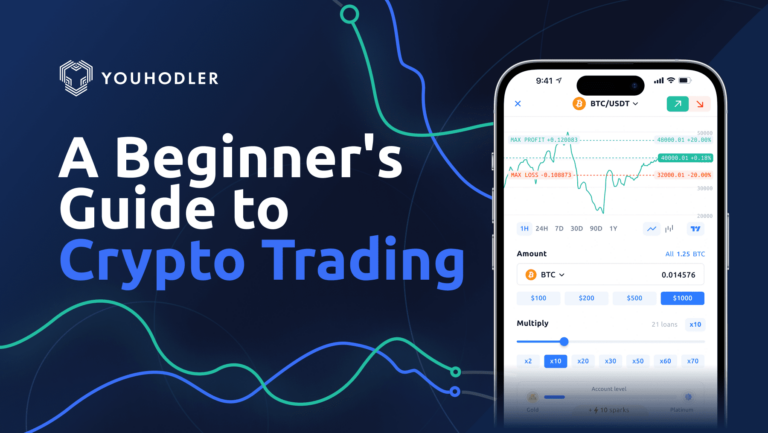
Step 1: Create and Verify Your Account
To trade futures, you need an account with an exchange that supports futures trading, such as Binance, Bybit, or Kraken. Here’s how to start:
- Sign Up for an Account: Register on the platform, such as Binance, by providing your email address and setting a secure password.
- Complete KYC Verification: Most exchanges require you to verify your identity with government-issued documents for full access to their services.
- Enable Two-Factor Authentication (2FA): This is a critical security measure to protect your account.
Step 2: Transfer Funds to Your Futures Wallet
After signing up, you need to transfer funds to your futures wallet on the exchange. This is different from your spot trading or main account.
- Deposit Funds: Deposit cryptocurrency or fiat into your main account.
- Transfer Funds to Futures Wallet: Navigate to your wallet and transfer a portion of your funds to your futures wallet. Make sure you transfer an amount you’re comfortable risking.
Step 3: Choose Your Futures Market
Once your account is funded, navigate to the futures trading interface:
- Select “Futures” from the Menu: On exchanges like Binance, you’ll find this in the navigation bar.
- Choose the Contract You Want to Trade: There are a variety of contracts available, typically trading against stablecoins like USDT (for example, BTC/USDT).
Step 4: Understanding the Futures Trading Interface
The futures trading interface is often more complex than spot trading, but once you familiarize yourself with the tools, it becomes easier to navigate:
- Price Chart: Located in the center of the interface, the price chart allows you to analyze the asset’s historical price movements.
- Order Book: On the left side, you’ll see the real-time buy and sell orders from other traders.
- Position Info: Below the chart, you’ll see open positions, profit and loss (PnL), and margin balances.
- Leverage Slider: This allows you to adjust your leverage before opening a trade. Exchanges often offer leverage as high as 100x, but for beginners, it’s advisable to start with lower leverage (e.g., 2x to 5x).
Step 5: Placing a Futures Trade
Once you’re familiar with the interface, it’s time to place your first trade. Here’s how to do it:
- Choose Your Leverage: Use the leverage slider to select how much leverage you want to use for your trade. Beginners should start conservatively with lower leverage (2x–5x).
- Select an Order Type:
- Market Order: Instantly buys or sells at the current market price.
- Limit Order: Places a buy or sell order at a specific price you set. The trade executes only if the market reaches this price.
- Stop-Limit/Stop-Market Order: These are used for setting automatic buy/sell orders if the price hits certain levels. Useful for risk management.
- Long or Short:
- Open a Long Position: If you believe the price will increase, you select “Buy/Long”.
- Open a Short Position: If you expect the price to drop, select “Sell/Short”.
- Set Stop-Loss and Take-Profit Levels: It’s important to set a stop-loss to limit potential losses if the market moves against you. Similarly, setting a take-profit target helps you lock in gains when the market reaches a certain price.
- Execute the Trade: Once your parameters are set, click “Buy” (for long) or “Sell” (for short) to execute your order.
Step 6: Managing Your Trade
After opening a position, it’s essential to manage it properly:
- Monitor Your Position: Keep an eye on your profit and loss (PnL) and the margin level of your trade. The exchange will display these values in real time.
- Close Your Position: If your target price is reached or you want to exit the trade early, you can manually close the position by clicking “Close Position.” You can close either a part of the position or the entire trade.
- Liquidation Risks: If the price moves significantly against you and your margin balance falls below the maintenance level, your position will be liquidated. You can add more margin to prevent liquidation, but it’s better to avoid risky trades by using appropriate leverage.
Risks of Futures Trading
Futures trading comes with high rewards but also significant risks, especially for beginners. Here are some key risks to be aware of:
- Leverage Amplifies Losses: While leverage can increase potential profits, it also magnifies losses. A 10x leverage position can lead to a total loss of your margin if the asset price moves by just 10% against you.
- Liquidation: If your position gets liquidated, you may lose your entire margin. Understanding how margin and liquidation work is critical before entering trades.
- Volatility: Cryptocurrency markets are extremely volatile, which can lead to rapid price fluctuations that can trigger stop-losses or liquidations.
- Psychological Pressure: The high stakes of futures trading can lead to emotional decision-making, which often results in poor trading choices. Having a clear strategy and sticking to it is essential.
Tips for Successful Futures Trading
- Start with Small Amounts: Begin by trading small amounts, especially when using leverage, to reduce your exposure to risk.
- Use Stop-Losses: Protect yourself from large losses by always setting stop-loss levels.
- Trade with a Plan: Enter trades with a clear plan, including your entry, exit, and stop-loss points. Avoid emotional trading decisions.
- Keep Leverage Low at First: For beginners, low leverage (2x–3x) is recommended to minimize risk.
- Continuous Learning: Stay informed about market trends, technical analysis, and risk management strategies.
Conclusion
Futures trading offers the potential for high profits, but it comes with substantial risks, especially for beginners. By understanding how futures contracts work, familiarizing yourself with the trading platform, and implementing a disciplined risk management strategy, you can gradually develop the skills necessary to navigate this market successfully. Always start with small amounts and lower leverage until you gain confidence and experience in futures trading.









